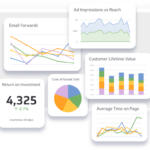Why Micro-data Centres are Stealing the Spotlight?
As consumption of digital services through our smartphones and other devices are increasing, it’s also changing the ways data centres are deployed. The companies are moving their stuff to the cloud but the data centre could become decentralized via ‘micro-data centres.’
If you have a look at the current systems, the more the distance from the data centre, the longer it will take to deliver the digital services and the increased bandwidth costs is another headache. Today, I will talk about Micro-data centres and why they are stealing the spotlight these days.
What is the Micro-Data Centre?
A small and modular system capable of serving small businesses and providing additional resources for an organization is called Micro-Data Centre (MDC). These are designed in a way that can solve different kinds of problems or process several workloads that cannot be managed by any traditional means or large modular data centres.
Talking about the size, an average 40-feet container-based data centre usually hosts dozens of servers and thousands of virtual machines. In a single 19-inches box, a micro-data centre could contain less than 10 servers and 100 virtual machines. MDCs prefer container-based data centres and provides built-in security systems, cooling systems and flood and fire protect
As we all know, the larger the distance of the data centre, the longer it will take to deliver the services and ultimately results in increased bandwidth costs. Micro-data centres are often used for edge computing and keep computing resources closer to customers.
What Problems a Micro-Data Centre Can Solve?
The industry is witnessing growing use of modular or container-based server systems. Even tech giants such as Microsoft using a combination of approaches for its datacentres.
It’s true that moving away from complex traditional datacentres containing numerous servers, network and storage devices are not that easy. It requires purchasing, implementing, maintaining and a lot of other stuff. Organizations might be understanding the advantages of pre-designed, fully functioning “engineered systems” now but it’s important to have a look at the problems a micro-data centre solves.
Let’s take an example of an old mainframe or mini-computer. They are self-contained with their own computation and storage capabilities and network interface card which is used to connect the system to the world.
If you plan this system through the modern approach, you can use Cisco’s UCS, VCE’s V-Blocks or Dell’s Active Systems. These are pre-built systems that can be implemented rapidly within an existing data centre. You just need to ensure that suitable space, power and cooling are available.
Another mode of deployment is container-based systems. Now, let’s take another example of a shipping container packed with all the required facilities. You just need to plug it or water to make it operational. Otherwise, the container is self-contained. Once it has finished its job or its capabilities are no longer enough for the job, it can simply be removed and replaced with relative ease.
Again, these options are not suitable in every case. Most of them are mostly aimed at the larger end of the market.
There are many small and medium-sized corporations who can consider acquiring, implementing and running systems that can be used as stand-alone platforms without the need of a specific data centre availability.
Even big companies may need a specific system to run a more physical workload or airlock an application from the rest of the technology platform for security reasons, etc.
Advantages of Micro-Data Centres
1. Reliability
In general, the reliability of a data centre is determined by the extent its critical systems can be customized. This is why a standard-model of a vehicle is more reliable and less costly than a custom-built one. There’s no doubt that larger data centres could be standardized. But it’s much easier and practical to standardize the smaller ones. This is one of the most effective advantages of micro-data centres.
2. Scalability
Micro-data centres are fully scalable as per your requirements. It can help a lot in saving your hard-earned money by making you pay for only “what you need” and “when you need”. These data centres can easily be stepped and repeated to sustain the growth in the IT industry as the company may need more computation power in the future.
Once fully utilized, another one is deployed in the same facility or in a different one depending upon the available electrical, space and bandwidth capacity. Their standardized nature makes them a far better scalable solution as compared to traditional ‘stick-built’ ones.
3. Deployment Speed
Micro-data centres eliminate the need to design, specify, obtain and integrate a group of different components. That’s why some businesses choose these data centres to deploy a computing solution fast.
As micro-data centres are a complete physical infrastructure solution, it significantly decreases the timeline of the project as compared to traditional data centres. The speed of deploying a micro-data centre is heavily dependent on the standardization. The more standardized the micro-data centre, the more likely it is to be a stocked item.
4. Outsourcing and Colocation
Chief Information Officers (CIOs) who are responsible for moving their IT gear from on-premises data centres to colocation places, or who outsources applications to cloud providers, are still worried about a certain amount of IT gear present in offices.
Micro-data centres are perfect to support this IT gear due to their small size and ability to be placed in an open office area. After this, you can easily convert an existing data centre or server room space to office space.
5. Reduces Capital Cost
Unlike traditional data centres, Micro-data centres can run off of a building’s existing physical infrastructure. It can utilise the ‘sunk costs’ in facility power (ex – switchgear), cooling and shell construction, thus making it an affordable option for building a new data centre.
There are a lot of benefits of distributing micro-data centres. They can scale as needed, reduce computing latency and reduce the risk of bringing down everything at once. if you need more capacity, simply add more microdata centres. You can further simplify management, reduce deployment time, lower maintenance by standardizing these micro-data centres.
6. Security
Besides latency and bandwidth concerns, cybersecurity is one of the most important issues that is forcing organizations to reconsider their cloud models. There are still many organizations who are not ready to put all their data on the cloud and afraid of potential security threats.
A micro-data centre can air-lock the data so that it remains within the frame except when the right, multi-factor identification factors have been provided. They can even exclude the users with privileges to access the other areas of the system.
Overall, micro-data centres are highly secure, cost-effective, and simple-to-deploy systems that provide a fully scalable and intelligent way to manage distributed assets.
Final Words
If we look ahead, micro-data centres have a tendency to open more opportunities for edge computing. They will help solution providers to come up with managed services, as they can create pre-packaged edge solutions bundling storage, connectivity and computation seamlessly.
If you are also worried about moving your data to the cloud or planning to expand your infrastructure, consider leveraging micro-data centres as part of your deployment. Moreover, you can also include Data centre infrastructure management (DCIM) or any other data centre monitoring software to make managing your microdata centres easier.













![The Untold History Of The Wheel And Its Evolution [Infographic]](https://technofaq.org/wp-content/uploads/2017/09/History-of-wheels-IG-content-v2-150x150.jpg)




